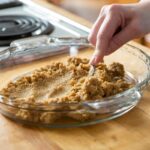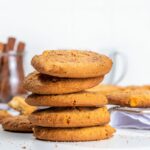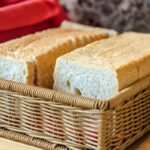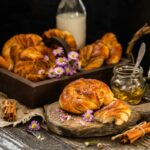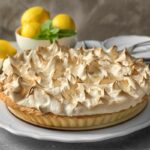If you are new to baking or are trying to perfect a pie recipe for your next family gathering but are finding that the crust keeps getting soggy, then do not worry because this is a common issue and likely there are easy ways to avoid it.
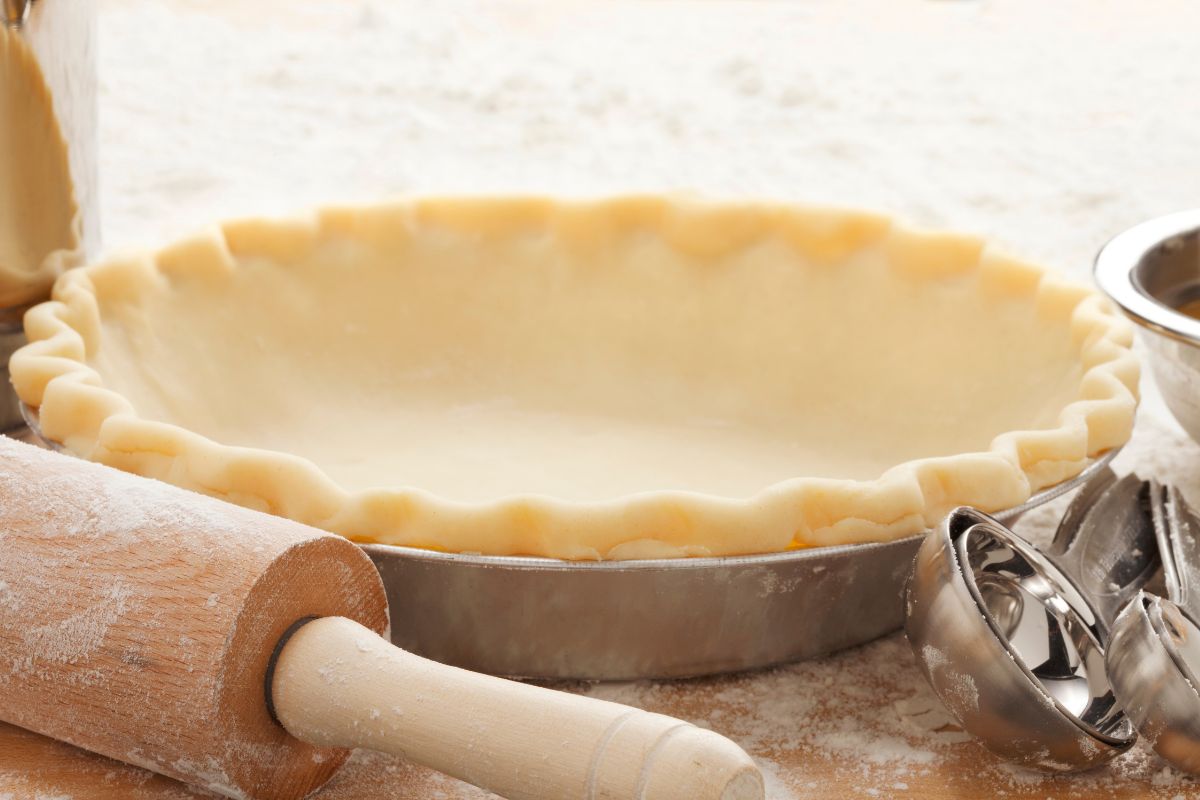
Why Do Pie Crusts Get Soggy?
There can be numerous reasons why a pie crust gets soggy, but it tends to happen in the same way.
The crust will lose part or all of its crunch over time. The liquid in the filling migrates from the wet filling to the dry crunchy crust, making it soggy.
Technically, the filler also becomes a bit drier. However, you will not notice these changes over a few days because the resulting texture change is small. The liquid flow is obscured by the crust.
Ways To Stop A Pie Crust From Getting Soggy
Luckily, there are lots of different ways that you can prevent the pie crust from getting soggy. You will likely have to do some trial and error though in order to find the right solution for you.
Use The Right Pan
Everything begins with the pie pan. Select a glass or metal pie dish with a dull finish. Glass gradually heats up, allowing your crust to bake evenly.
Furthermore, its translucent material allows you to easily monitor the progress of your crust so that you may remove it when it’s golden and crispy. Just remember to oil your glass pie plate before using it.
Metal warms up rapidly and evenly, but it’s a little more difficult to keep track of your crust’s progress in a metal pan than in a glass pan.
Because metal, primarily aluminum, transmits heat the fastest of any other pie pan material, it is better to use an aluminum pie pan to produce the desired golden-brown hue.
Add The Filling When The Pie Is Hot
A heated filling helps the crust solidify before it goes into the oven, decreasing sogginess. So, if the recipe specifies adding the filling while it is still hot, don’t let it cool before adding it to the crust.
Brush With Egg
Another approach to avoid a soggy crust is to seal the surface to create a protective barrier between the filling and the crust.
Brushing the unbaked crust with egg white mixed with water or just beaten egg before adding the filling ensures that the proteins in the egg create a moisture barrier on top of the crust and protects the crust from the moisture while it bakes.
Brush With Chocolate
Pie crust becomes flaky, light, and crisp when the heat of the oven quickly melts the small bits of fat inside the crust, generating steam that makes the crust puff up.
You want that procedure to be speedy so that the crust can set before the filling can leak in and make things mushy.
Place a baking sheet in the oven while it warms, then place the pie dish immediately on that hot baking sheet – this extra burst of heat will help the crust cook and solidify quicker.

Use A Cookie Sheet
Placing a ready-to-bake pie on a heated cookie sheet helps liquefy the solid layers of fat in the pastry, allowing the dough to become impermeable to the liquid in the pie filling.
Preheat the oven to 350°F before beginning to assemble the pie. Take the cookie sheet out of the oven and place the pie on it. After that, bake as usual.
Drain The Fruit
Too much liquid in your filling may cause your pie crust to get mushy. The filling should be thick or composed primarily of solids. If the filling is particularly watery, it might cause the pie shell to get soggy.
So, if you’re cooking a pie using fruit, make sure it’s not just drained of extra moisture but also dried off. Fruit that is too wet might create problems, so make sure it is as dry as possible.
Don’t worry about putting the fruit in the pie pan dry since it will soften and moisten as it bakes.
You can utilize fruit juice as part of the filling in the pie, but you do not need to bake it with water that doesn’t need to be there.
Place On A Lower Oven Rack
Bake your pie on a metal baking sheet lined with parchment paper. To guarantee consistent browning, the baking sheet will soak up the heat and distribute it to the bottom of the pie.
Furthermore, the parchment paper prevents a sticky mess from leaking onto the floor of the oven.
Finally, bake the pie on the bottom rack of your oven.
This step is critical for a nicely browned pie crust because the heat will pass to the bottom of the pie faster than the top, allowing the bottom crust to crisp while the top should not get too browned.
Make The Crust Thicker
The bottom crust must be stronger compared to the top crust, so more heaviness is recommended. Roll the bottom crust a bit thicker than the top crust to prevent the liquid in the filling from leaking through the full layer of dough.
Try Blind Baking
Blind baking is one of the most foolproof techniques to ensure a crisp bottom pie crust. This simply means that you bake the crust first, either completely if you’re adding a cream or custard, or partially if the entire pie has to bake.
To keep the crust from bubbling up, line it with parchment paper and use pie weights to weigh it down before baking.
Final Thoughts
There is nothing worse than putting in all of that time and effort in the kitchen to make a delicious pie just to have it turn soggy and ruined by the end of it.
However, if you try the methods mentioned in this article, you will be able to make many pies without ever worrying about a soggy crust again!
- How To Reheat A Cheesesteak - November 5, 2023
- What Are Three Must Have Kitchen Knives? - September 22, 2023
- How To Protect Edges Of Pie Crust - June 15, 2023

